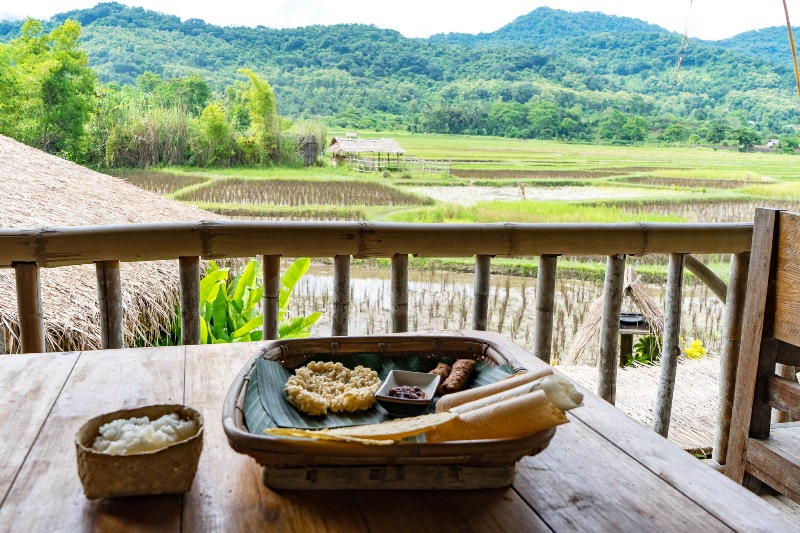Get hands-on experience of the process of growing, harvesting – and eating – rice!
The Full Rice-Growing Process from Seeds to Lunch
After corn, rice is the world’s most important cereal crop, with a staggering 510m tons produced every year – and a fair chunk of that is produced and consumed by the small Southeast Asian country of Laos, which is the world’s second highest rice consumer per capita: the average Laotian consumes over 250kg of rice per year!
Everywhere you go in rural Laos you’ll see farmers and their buffalo planting and harvesting rice in breathtakingly scenic rice paddies. But even after almost 20 years in Southeast Asia, I had to admit I knew next to nothing about how rice actually goes from the farm to my bowl, so during my recent trip to Luang Prabang I spent a morning at the beautiful Living Land Farm just outside the town, to check out their Rice Experience, and I came away with a much greater appreciation of this humble foodstuff and the people who grow it.

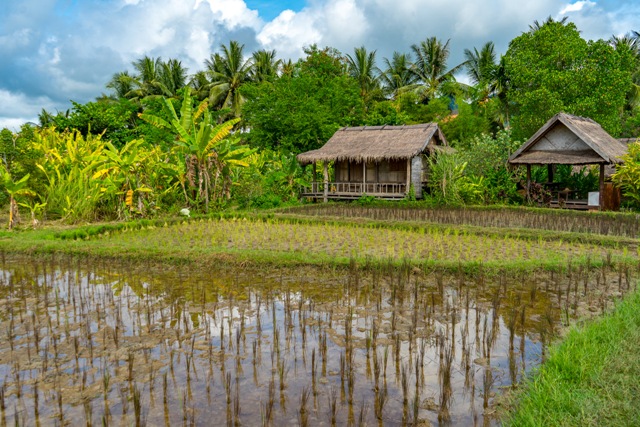
A Community Enterprise
Founded in 2005 by Swiss businessman Mark Schnebli, Living Land is an organic farm designed to make better use of the land and share it amongst local farmers. The farm produces rice along with various by-products such as rice wine, snacks and flour, as well as vegetables and bamboo baskets, and it also has a homestay and a restaurant.
The company also supports the local community with food for the needy, education sponsorships for local students (my guide Den was one of the recipients – Living Land supported him through university), free English classes for local kids, and much more, making it the perfect partner for a company like Khiri!
The Rice Experience
The farm’s main attraction is the Rice Experience – a guided tour of the farm and the rice-growing process, from the original seeds to the tasting of rice and snacks. The experience begins with a look at how farmers sort the good seeds from the bad, by dropping them into salty water; the good seeds sink to the bottom, the bad ones float on the top and so are skimmed off and used for animal feed or other purposes (nothing goes to waste on an organic rice farm!)
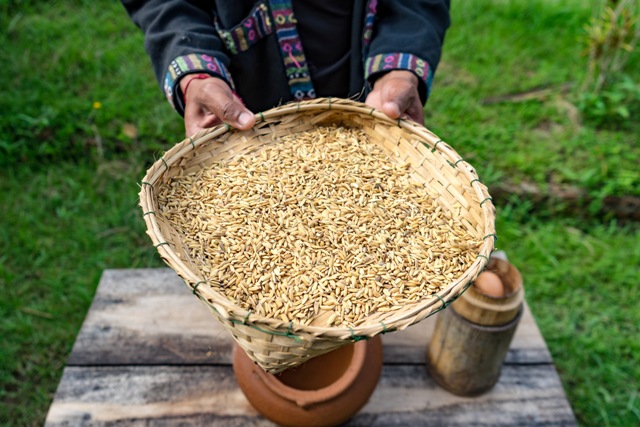
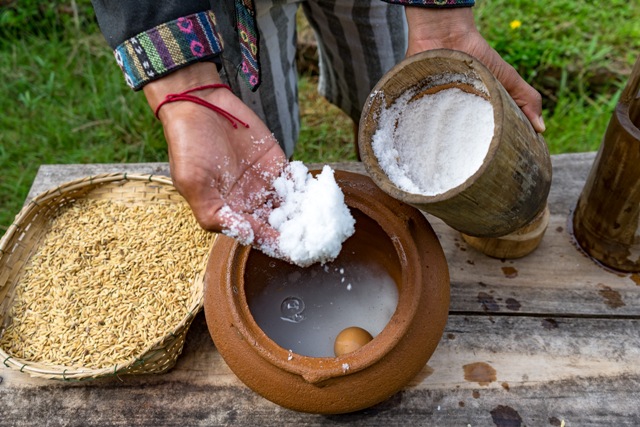
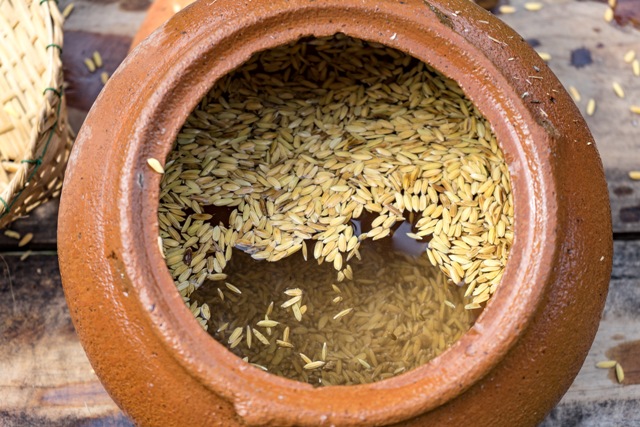
The good seeds are then planted in the wet mud of a rice paddy (and in such hot weather, there’s something extremely soothing about sinking your feet into that cool, damp mud), left for a couple of weeks (during which time they grow to a couple of feet in length) before being moved to a higher paddy to complete their growth. When the grains turn brown, they’re ready to be harvested, and on this particular farm the conditions allow two harvests per year.
In keeping with the farm’s organic ethos, the paddies are ploughed by traditional buffalo – buffaloes can work up to four hours a day, and spend the rest of the time eating and sleeping.
It is such hard work, and so complex, that it’s a wonder rice has become such a globally popular foodstuff; however a farm like this not only feeds its community but also provides jobs, education and tourism services, so it’s clearly a worthwhile enterprise.

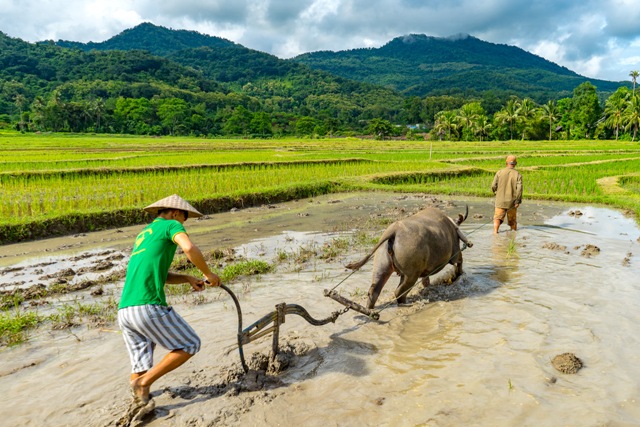
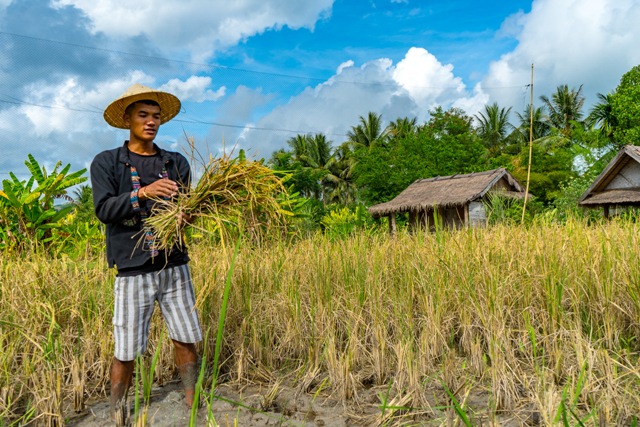
Once the rice is harvested, it’s time to turn it into the stuff we eat every day. This involves gently pounding, sifting and threshing the grains to remove the husks – dangerous work for the lady whose job is to move the rice around the giant mortar as the pestle rhythmically pounds the rice! One wrong move and she’ll lose her fingers.
The rice is then washed, dried in the sun (a common sight on roadsides in Southeast Asia), and bagged, and it is then ready for selling at the market and eating.
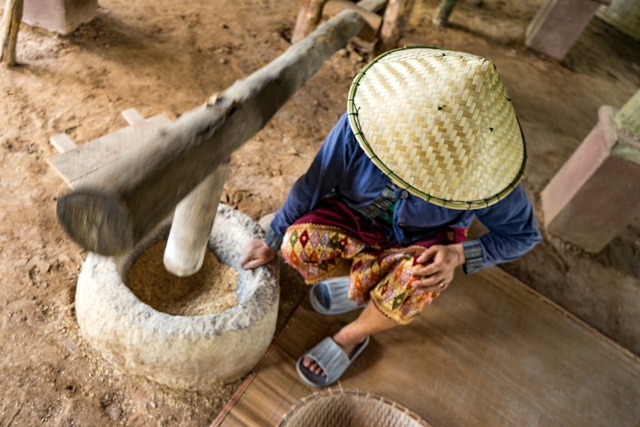
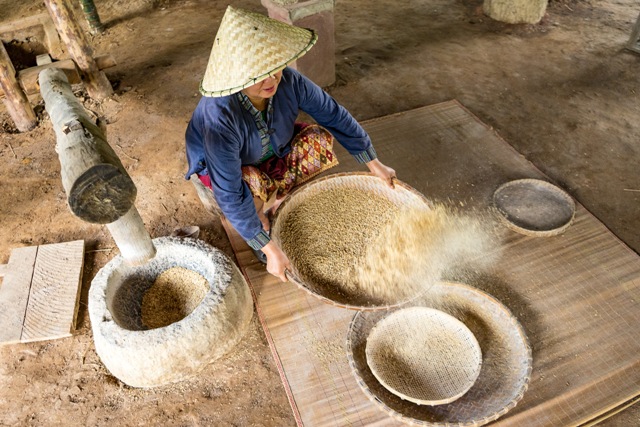
Reaping the Harvest
Finally after all this hard work (and yes, I did muck in with rice planting too!) it’s time to enjoy the fruits of our labours! I’m served up a plate of rice snacks including crackers and sticky rice, as well as come traditional Lao chilli paste to dip it in, and a jug of rice wine.
Whilst I’m enjoying this second breakfast, I chat to the owner Mark who tells me just how hard COVID has hit Luang Prabang in general and the farm in particular. So many restaurants and shops have closed down the market for rice has got smaller, so the farm has focused on feeding the local population during the pandemic. Thankfully now tourists are slowly returning to Laos, things will improve both for the farm and the town.
I spent three days in Luang Prabang during my trip and the Rice Experience was by far the highlight. I learned a lot, met some lovely people, and ate some great food. So if you’re sending clients to Luang Prabang, make sure you include this on their itinerary!
